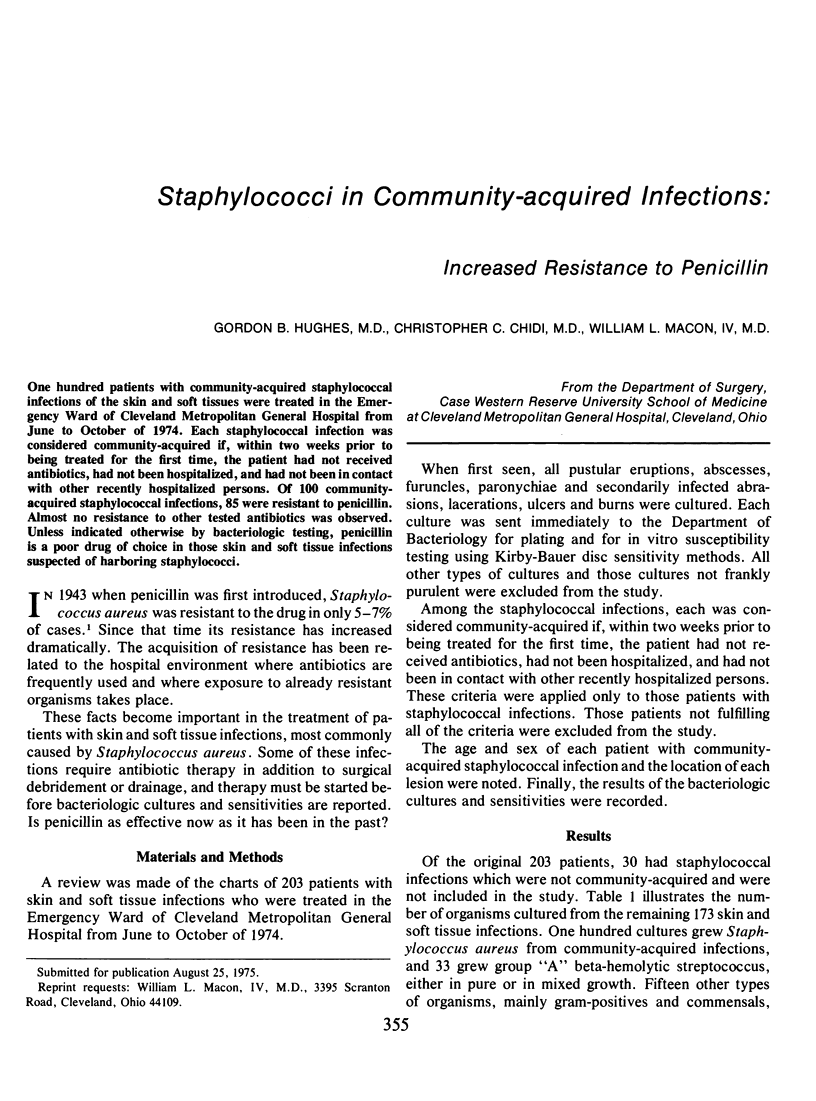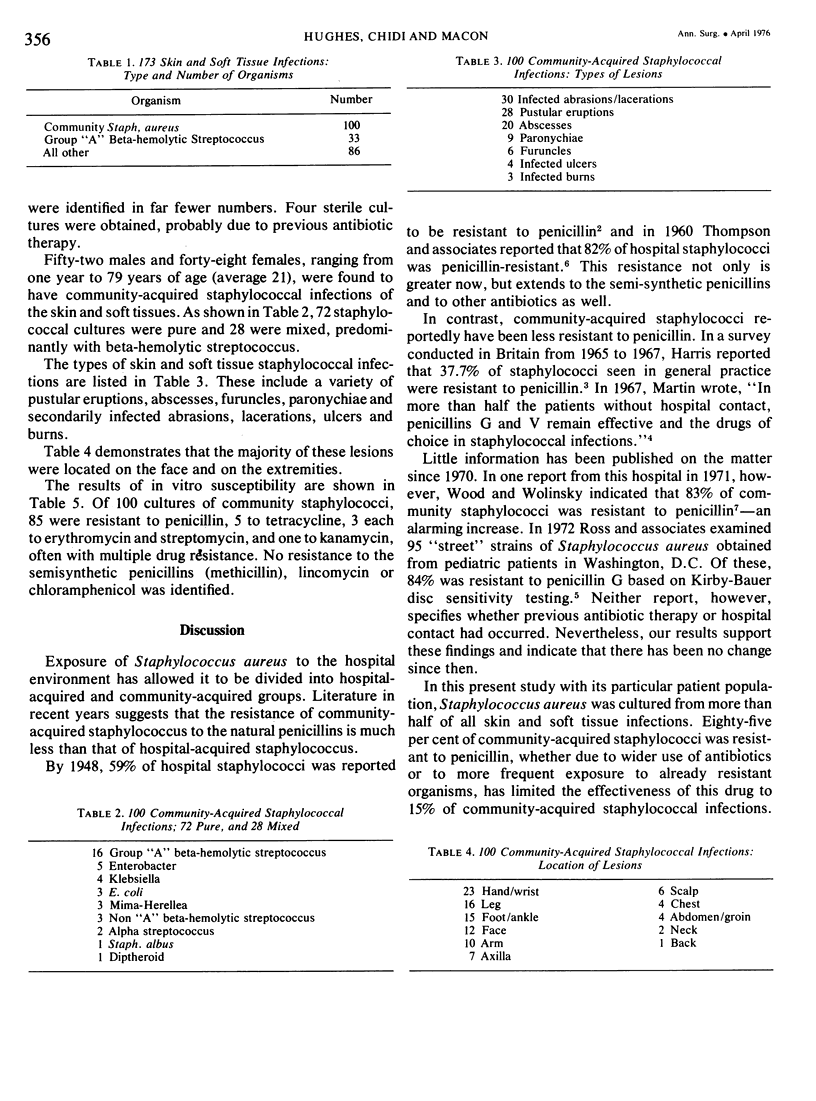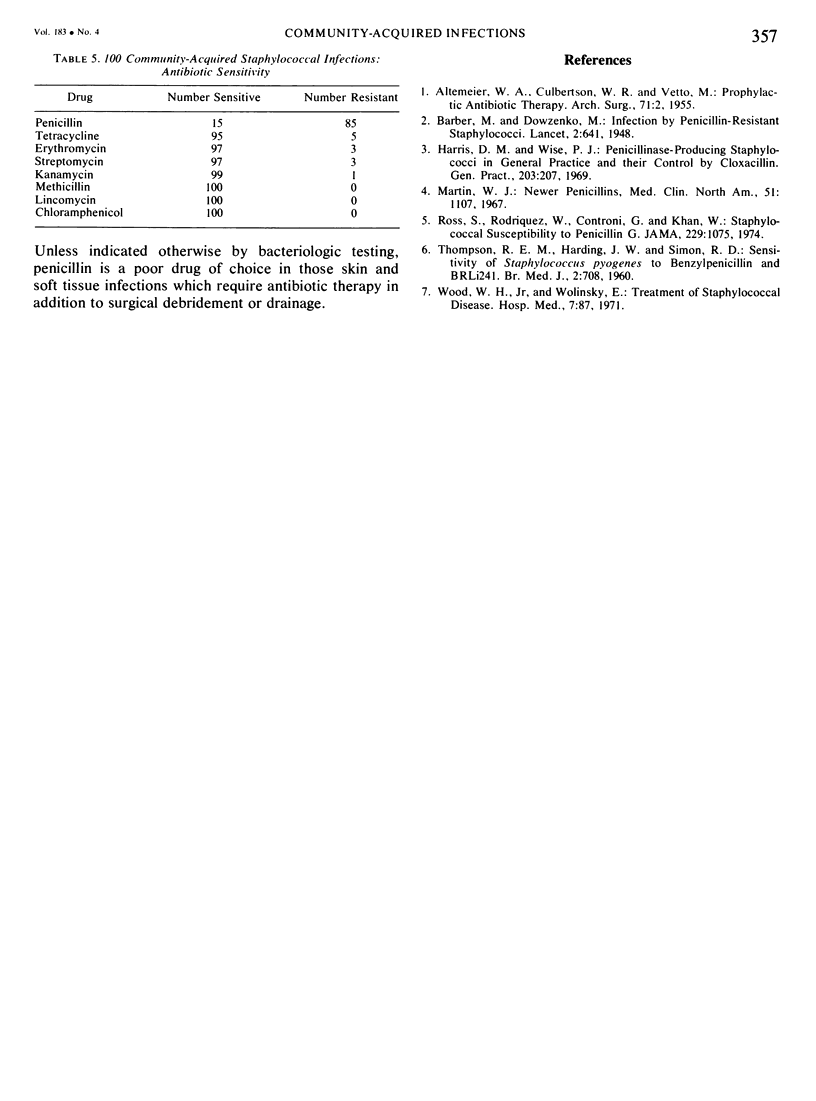Abstract
One hundred patients with community-acquired staphylococcal infections of the skin and soft tissues were treated in the Emergency Ward of Cleveland Metropolitan General Hospital from June to October of 1974. Each staphylococcal infection was considered community-acquired if, within two weeks prior to being treated for the first time, the patient had not received antibiotics, had not been hospitalized, and had not been in contact with other recently hospitalized persons. Of 100 community-acquired staphylococcal infections, 85 were resistant to penicillin. Almost no resistance to other tested antibiotics was observed. Unless indicated otherwise by bacteriologic testing, penicillin is a poor drug of choice in those skin and soft tissue infections suspected of harboring staphylococci.
Full text
PDF


Selected References
These references are in PubMed. This may not be the complete list of references from this article.
- ALTEMEIER W. A., CULBERTSON W. R., VETO M. Prophylactic antibiotic therapy. AMA Arch Surg. 1955 Jul;71(1):2–6. doi: 10.1001/archsurg.1955.01270130004002. [DOI] [PubMed] [Google Scholar]
- Harris D. M., Wise P. J. Penicillinase-producing staphylococci in general practice and their control by cloxacillin. Practitioner. 1969 Aug;203(214):207–211. [PubMed] [Google Scholar]
- Martin W. J. Newer penicillins. Med Clin North Am. 1967 Sep;51(5):1107–1126. doi: 10.1016/s0025-7125(16)32982-0. [DOI] [PubMed] [Google Scholar]
- Ross S., Rodriguez W., Controni G., Khan W. Staphylococcal susceptibility to penicillin G. The changing pattern among community strains. JAMA. 1974 Aug 19;229(8):1075–1077. [PubMed] [Google Scholar]
- THOMPSON R. E., HARDING J. W., SIMON R. D. Sensitivity of staphylococcus pyogenes to benzylpenicillin and BRL 1241. Br Med J. 1960 Sep 3;2(5200):708–709. doi: 10.1136/bmj.2.5200.708. [DOI] [PMC free article] [PubMed] [Google Scholar]


